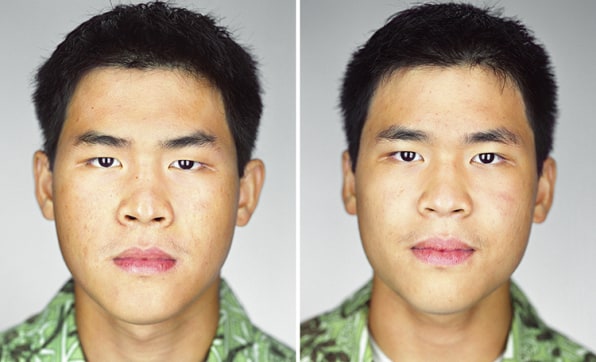How To Get Twins In Sims 4
The midcentury American photographer Diane Arbus photographed people who lived on the fringes of society: dwarfs, giants, transvestites, nudists. Her black-and-white portraits are famously unsettling and beautiful, and allow for a kind of pre-Internet voyeurism. Yet, her most iconic photograph isn't of circus folk or marginalized people. It's of two twin girls. Identical Twins, Roselle, New Jersey, 1967 captures two grade- school-aged girls with dark hair and dark matching frocks.
Which is exactly why, when National Geographic asked photographer Martin Schoeller to shoot twins for the magazine, it prompted a groan. "I said, 'Oh my god, twins, really?' " Schoeller tells Co.Design. "It's like the most obvious thing in photography. Right after sunsets comes twins."

But Schoeller accepted the assignment, and headed to Twinsburg, Ohio, for the annual Twins Day Festival. Despite the seeming cliché, the work grew on him. "You think of twins as the same person, but in two different bodies," he says. But Schoeller found that photographing them as individuals, and then comparing the two images side by side–as opposed to photographing twins together in one shot–told more stories about their shared histories than he imagined.
To accomplish this, he took each photograph in a strictly controlled environment–with the same angle, lighting, and blank piece of paper in the background. And facial expressions had to go–Schoeller wanted total neutrality to capture the most telling images. Fortunately, Schoeller's body of work has more than adequately prepared him for the challenge. The photographer has shot celebrities, such as Bill Clinton, Mark Zuckerberg, and Angelina Jolie, in the same dead-on portraiture. The straightforward, straight-faced images tend to be more revealing than more attitude-laced photos. That's because there's nowhere to hide: Facial lines and asymmetries all come to light.

For the twins (or the triplets and quadruplets), the photographs show lives lived in unison and lives that diverge. "You can see how, when you're born a couple hours or more later, life choices play out," says Schoeller. "One person's been smoking, or one is married with kids and the other is living a party lifestyle. Some are more at ease, some are more nervous. So even if they look much alike, you can distinguish personalities."
The work intrigued Schoeller enough to take him back to Twinsburg for the festival again in 2012, and to travel from New York to Seattle, Florida, and Canada (twice–apparently there are lots of twins in Canada). He tracked down identical quadruplets–an extremely rare group, given that the chance of giving birth to identical quadruplets is one in 13 million. He met transgender twins along the way, as well as twins who loved having a twin and twins who didn't. "There's always the question of comparison," Schoeller says. "On one hand you're born with your best friend for life, and on the other hand it's a curse."
See all 40 sets of portraits in Schoeller's book, Identical: Portraits of Twins.
How To Get Twins In Sims 4
Source: https://www.fastcompany.com/1672590/do-these-identical-twins-look-the-same-to-you
Posted by: valentinthaders.blogspot.com

0 Response to "How To Get Twins In Sims 4"
Post a Comment